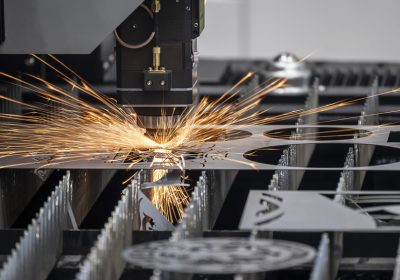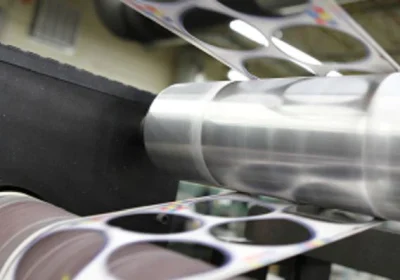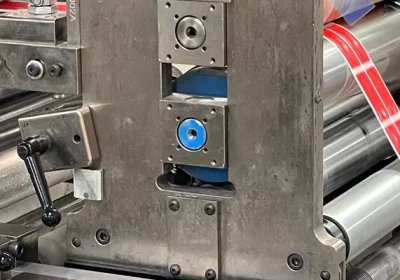Before you can even begin to select the right pressure sensitive adhesive (PSA) tape for your application, it’s important to understand what these adhesive tapes are made from. Knowing the basic “anatomy” of a PSA tape—the materials and different components that encompass their structure—will help you better understand which types of adhesive tapes are right for individual applications.
What is the basic structure of a PSA tape? There are three primary components to many pieces of PSA tape:
-
The carrier (sometimes called the backing)
-
The adhesive
-
The release liner
Note: looking for the basics? Read more about what PSA tapes are and how they work.

What is a Pressure Sensitive Adhesive Carrier?
The carrier refers to the material used to give the linerless adhesive tape its structure while supporting the adhesive. The PSA is laminated on one or both sides of the carrier which is typically made out of a thin film or foam. Carriers are helpful in many PSA tapes because they can help:
-
Add thickness to the tape, which can allow it to fill gaps, voids, and act as a seal/gasket
-
Enables the combination of unique film and adhesive characteristics to create single-sided tapes for nearly any application.
-
Enables more different adhesives to be used on either side of double-sided tapes
-
Provide dimensional stability to the tape
-
Provide cushioning, sound and vibration dampening, insulation, and other benefits
-
Increase strength and stability in an application
-
Allows the tape to be die cut into complex shapes s
Whether you choose a double-sided or single-sided tape, a carrier will be used to hold the adhesive and help it keep its structure. Single-coated PSA tapes are self-wound thick tapes with pressure sensitive adhesive on one side of a backing. Some tapes are self-wound carrier and adhesive and others are self-wound along with a removable liner. Depending on the backing, self-wound tapes are ideal for masking, sealing, protecting, shielding, insulating holding, identifying applications, and more!
https://www.youtube.com/watch?v=C0AqoHA_9qg
There are many single-sided specialty tape carrier options for specific applications that require masking, shielding, dissipating energy, reflecting heat or UV waves, reducing noise, vibration, and harshness (NVH). These carrier types include:
-
Metal Foil Tapes
-
Glass Cloth
-
Polyester Tapes
-
Polyimide (Kapton) Tapes
-
PTFE (Teflon) Tapes
-
UHMW Tapes
-
PVC Tapes
Double-sided PSA tapes are self-wound thick tapes with PSA on both sides of the carrier backed by a removable liner. With thicknesses ranging from 4 mils to up to 1/8” depending on the carrier, these tapes can be used to provide dimensional stability, fill gaps and bond irregular surfaces. The only PSA tapes that do not use a carrier are adhesive transfer tapes, which are PSA tapes that self-wound thin tapes with pressure sensitive adhesive laminated directly onto a removable liner. Once applied, the liner is removed, and the adhesive is left behind where it has been applied.
There are many carrier materials that are commonly used in double-sided tapes, including:
-
Polyester (PET)
-
Polypropylene (PP)
-
Polyvinyl Chloride (PVC)
-
Paper
-
Tissue
-
Acrylic Foam
-
Polyethylene Foam
-
Urethane foam
-
Polyvinyl Chloride (PVC) Foam
What are the Adhesives in Pressure Sensitive Adhesive Tapes?
The adhesive portion of PSA tape is the contact layer of the tape that bonds to the substrate, allowing for the tape to adhere to a surface or for two different substrates to be bonded to one another. There are a range of adhesive materials that allow for bonds to be maintained in a variety of environments, provide different levels of adhesive strength, resist different environmental hazards, and more. Choosing the right adhesive for your adhesive tape can be the difference between a bond that lasts and one that fails quickly.
There are three major types of adhesives:
-
Acrylic PSA: the highest strength PSA that is ideal for hard to bond substrates. It offers a strong, long-term bond with many environmental resistances, and a typical temperature range of –40 °F to 250 °F.
-
Rubber PSA: ideal for applications that require an immediate strong bond. It’s affordable and food safe (FDA approved), and can be used in temperatures between 0°F and 180°F.
-
Silicone PSA: the adhesive with the highest temperature resistance, able to give high performance across temperature from -100°F to 500°F. It also has excellent chemical resistance, electrical insulation, and can often bond to silicone surfaces.
We have a more in-depth breakdown of these types of PSAs here.
What is a Release Liner?
The release liner component of PSA tape aids in manufacturing, protects the tape’s adhesive from production to use, and can make the difference in production productivity when specified correctly. Liners are typically made from kraft paper, polyester, polypropylene or polyethylene that come in a variety of thicknesses depending on the need. These films are coated with silicone, fluorosilicone, or fluoropolymer release agents to enable the adhesive to be cleanly removed without damage. Liners are used in double and single-sided PSA tapes and are a critical, often overlooked, part of the tape construction. Ensuring the correct release force, dimensional stability, and ease of removal are critical to tape application success! Release liners are easy to remove during application, making PSA tapes one of the fastest ways to adhere surfaces or apply a layer of adhesive during the assembly process.



